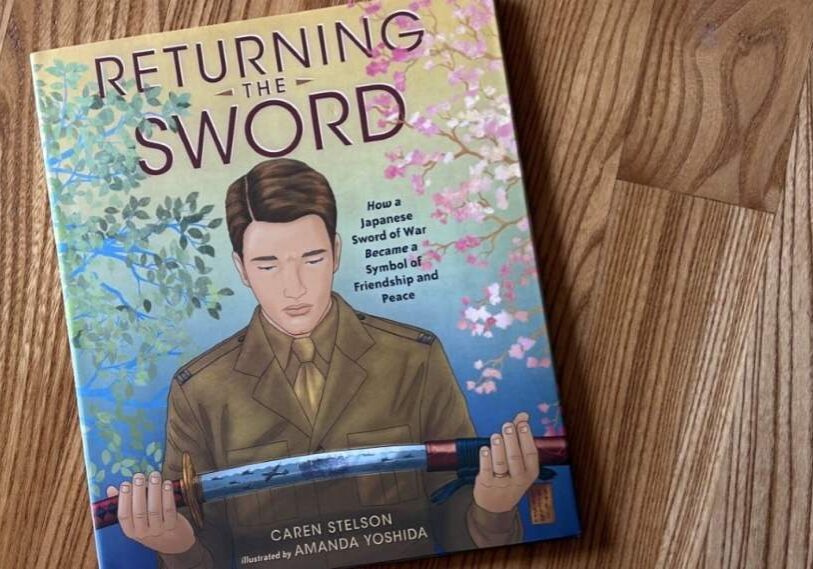Trout in the Classroom | Opening a New World To Kids

RUSHFORD – In the back of Jacob Kramer’s sophomore biology classroom at Rushford-Peterson School is a fish tank with about 250 one-inch-long rainbow trout that will teach students about trout, water chemistry and the scientific method of precise measurements and observations.
But Kramer, in his fifth year at R-P school, has plans much wider than biology for that little fish tank. In the future, he sees it as an inspiration for art, math, English, just about any subject.
More than a fish tale, this classroom covers it all
“There are so many different ways you can use these fish,” he said. “It’s completely cross curricular.”
This year, however, will be mostly biology, he said.
The tank and about 350 round orange rainbow trout eggs were given to the classroom as part of Minnesota Trout Unlimited’s (MNTU) Trout in the Classroom (TIC) program. It’s one of several dozen across the state and the only one in Fillmore County, an area that is rich in trout streams loaded with brown and brook trout and a few rainbows that are all stocked.

In early December, instructor Jacob Kramer examined about 350 rainbow trout eggs, delivered that day as part of the Trout Unlimited Trout in the Classroom program, while members of the freshman class watched. (Photo by John Weiss)
Once trout grow larger, they are expected to be released into a local stream — typically in early May.
Each day, two students are assigned to check on the fish, observe them and take basic water chemistry. In early February, they were Sebastian Escobar and Christian Zibrowski.
Escobar looked to see if any had died and found that none had.
Hands-on science teach kids about the delicate balance in nature
How did they look? “They’re all swimming near the top. Around the tail an orange color is forming. All very active.”
Zibrowski used water from the tank to check chemistry: no nitrite or ammonia, pH level of 8.2, and water temperature of 51.9°F.
Everything looked good.

Sebastian Escobar checks fish in the tank. (Photo by John Weiss)
“I think it’s pretty cool that we can send out some trout into the environment,” Escobar said.
Though it was his first time, he picked up on something critical to care for the tiny rainbows, and tens of thousands brown and brook trout in the county streams: “you really need to take care of them to live,” he said. They need everything right.
“They are pretty high maintenance, you need to be taking care of them “with the right pH, temperature and nitrite/nitrate,” Zibrowski said. With all that can go wrong, he’s impressed that trout live in local streams. “There must be a lot of good stuff they are eating in the water.”

Jacob Kramer explains how to test water to Sebastian Escobar (in the middle) and Christian Zibrowski. (Photo by John Weiss)
Kramer said he’s in his fifth year at RP and learned about TIC from two Trout Unlimited members and former Rushford-Peterson teachers — Mike Jeresek and Jim Reinhart. He was quickly convinced to get it. Oddly, only a few members of this year’s sophomore class fish for trout, he said, but next year, he said a lot of anglers take part.
He’s a trout angler himself. “It’s just being out there in nature,” he said. “You get to really encounter nature on a different level with it. You’re walking the creeks.” They are more scenic “and the trout are beautiful.”
When trout were delivered a few months before, they were about 350 shiny orange balls. The first to see them was the freshman class. “I was surprised at how interested they were in it,” he said. Though they won’t get to work directly with the tiny trout until next school year, they still often peek into the tank to see the fish, he said. “I’m really excited for next year with that group,” he said.
A long-term investment in learning
Trout in the Classroom works perfectly with his teaching philosophy of hands-on learning, Kramer said. It’s also a long-term investment in the health of local streams. Though it probably won’t convince too many students to become trout anglers, it should make them more aware of trout streams and their health.
It might lead students to research laws trying to control pollutants getting into the streams or more about food chains, he said. “What does this mean for us?” In Rushford, students might ask, what role can they play to protect waterways? “It’s a long-term investment for the health of our streams,” Kramer said.
Kramer has it right, said Amber Taylor, head of the MNTU program.
“This is way beyond watching these eggs grow in a tank,” she said. “This program teaches about history, teachers use it in science class, art, science physics, social studies, natural resources, watershed ecology, natural resources conservation.”
It tries to teach students about the importance of streams and how we can improve them, Taylor said. “You have to care about something before you are going to make a difference,” she said.

Three tiny rainbow trout swim freely in a fish tank. (Photo by John Weiss)
This program is part of a nationwide TU program, though some states have Salmon in the Classroom. It began in Minnesota in 2007 when a teacher in Bemidji, who is an avid angler, heard about it and started it there. Then the state TU began putting money into it and got large state grants to keep it going, she said.
In 2015, it received a Legislative-Citizen Commission on Minnesota Resources grant and it hired its first director. She took over in 2018.
Today, it’s in about 70 schools (some elementary, others middle or high schools) with 80 tanks and reaches about 6,000 students annually, she said. Some are students with special needs. TIC has never done a formal analysis of the program’s impact but from what she hears, the little trout have a big impact.
“It’s not all fun and games,” Taylor said. Things can go wrong with the tank, fish might die. That’s part of nature. “Talking to kids about that impact is important,” she said.
“We plant a lot of seeds with this program,” she said. “We open those worlds up to kids.”






